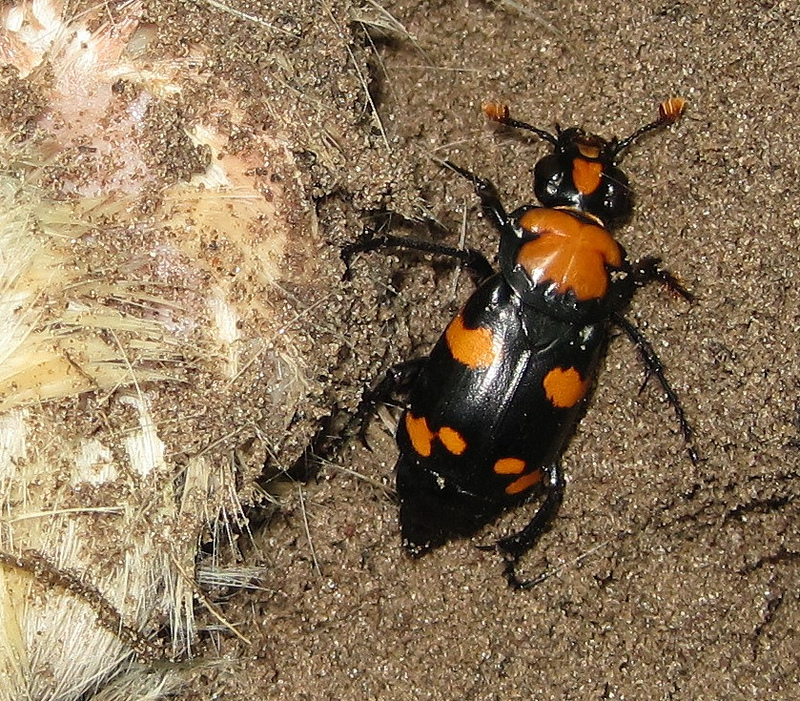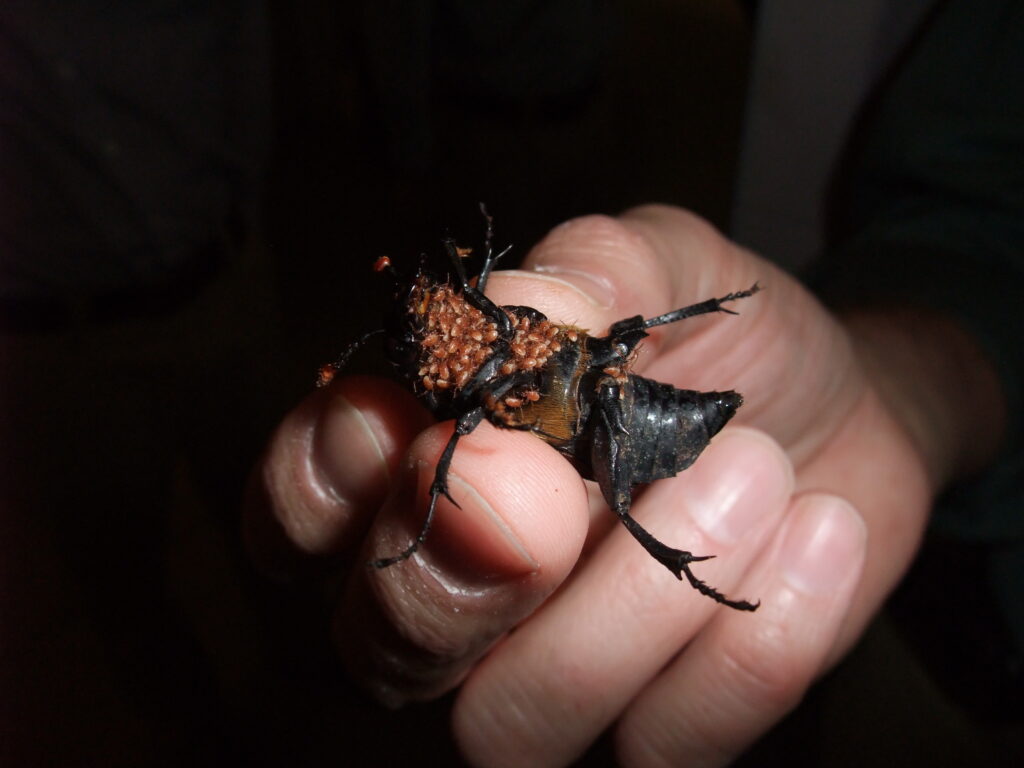Creepy-crawly critters of all kinds take center stage this week as we celebrate Halloween. Here at ZNE Field Conservation central, we love bugs, and our favorite kinds are the rare ones in need of some special help and protection. It just so happens that we’re working with one such rare bug right now, and it’s a perfect fit for the Halloween season: the American burying beetle: (Nicrophorus americanus).

This beetle’s handsome black-and-orange pattern is clearly in the Halloween spirit, but what’s even more exceptional about these bugs is their reproduction. In a horror story fit for any autumn campfire circle, American burying beetles take flight when night falls on a warm spring or summer evening. Following their keen sense of smell, they seek out a freshly-dead corpse: a mouse, perhaps, or a small bird or frog. There, they land, but seldom alone. Competition among burying beetles for choice corpses can be fierce, and both males and females must often fight off competitors in order to maintain possession of their grisly prize.

Once competitors have been chased off, the beetles dig a grave for their find, which then also becomes the nursery for their future babies. This is no simple task, often involving two 3-gram insects burying a 200-gram carcass. A pair of burying beetles wishing to bury a 200-lb human in this way would have to weigh about 3 lbs and be over a foot long each. The beetles bury the carcass in an underground chamber, and then transform it into a ball-shaped mass of meat, stripping off its fur, feathers, or scales and adding special secretions from their own bodies to inhibit the growth of bacteria and keep the meal fresh. The pair then mates, and the female lays her eggs near the balled-up carcass. Within a week, the larvae hatch. American burying beetles are very attentive parents, staying with their larvae and feeding them bits of regurgitated meat from their prepared carcass. The larvae then pupate, entering cocoons to transform into adults, which can take up to two months.
American burying beetles are a Federally Threatened species, which means they’re rare all across their U.S. distribution. This is likely due to a combination of factors, including habitat loss and pesticide use. That’s a shame, because these creatures are not only fascinating but very important to our ecosystems as well. They tidy up carcasses and prevent outbreaks of other corpse-breeding animals like blowflies.

They also have a symbiotic relationship with mites of the genus Poecilochirus. These mites hitchhike on the beetles’ backs to reach new habitat and food sources. When the beetles lay their eggs, the mites crawl off and live in the brood chamber. They eat the eggs and maggots of flies that might compete with the beetles’ own babies for food. Zoo New England is working to develop an American burying beetle captive breeding program to rear these amazing creatures in captivity. Stay tuned for updates!
